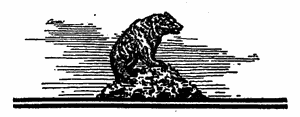| Home -> Other California History Books -> The Spirit of 1906 - Adjustments | |||
 |
|||
|
Adjustments
|
|||
|
There are millions of stories with regard to the adjustment and settlement of claims during this period. All kinds of pressure, all kinds of seduction and all kinds of bribes were offered the adjusters. There appeared to be in the minds of many a conviction that this was the time to make a claim against the insurance companies; that everything was burned and that with the upset conditions any old claim could get by. Stevedores, laborers and others not generally credited with an excess amount of worldly wealth gayly and festively swore to proofs showing the loss of family plate, ancestral pictures, silk underwear, ball gowns, evening clothes and jewels. There was no possibility of disciplining these perjurors and it was up to the expertness of the adjusters to defend their companies from being looted.
There were all kinds of attempts to defraud on the part of other policyholders. One instance in which the California was interested was a proof for a $16,000 loss on a policy covering on stock of dry and fancy goods located in a building on Market street. I received a visit from the policyholder who made a request for prompt payment. I explained that our funds were being raised by assessments which were levied once a month and that, if agreeable, we would pay him sixty per cent of his claim and the balance in sixty days. This appeared to be satisfactory and he left in a happy frame of mind. Thirteen thousand dollars of the risk in question was ceded to other companies and we naturally filed claims with the reinsurers for their proportion. The following day a friend who was acting as chief adjuster for another office which was one of the re-insurers on this risk, called upon me regarding this particular claim. He laid upon my desk a photographic album and called my attention to a large photograph of the building wherein the stock was located. It was a two-story brick and the picture showed that the entire front of the second story had, as the result of the earthquake, been thrown into the street. This was taken before the fire had reached the property. He stated that the authenticity of the photograph was absolutely guaranteed and that in event of litigation, the testimony of the photographer was available. He further stated that acting for the re-insuring company, he would not follow the California for more than sixty-five cents on the dollar. I borrowed the photograph and at once sent for the claimant. He called the next day. It was found on examination that he had made the statement to the general adjustment committee that the property was not damaged prior to the fire. Unfortunately, no affidavit was taken from him to that effect. With the photograph before me, I realized at once that the claim was not an honest one. I explained that the larger part of our policy had been ceded to other companies and that some of them demanded, earthquake affidavits with every claim; that while I regretted to put him to any inconvenience, it would be necessary for him to produce this testimony. He looked me squarely in the eye and said, "I'll sign it and swear to it. Not a brick in the whole building was disturbed." He attached his signature to the affidavit. I showed him the photograph and then stated that we should be compelled to penalize him to the extent of thirty-five cents on the dollar. As a matter of equity, there was little, if any, liability under the policy. He shouted, "Fake!" "No," I replied, "simply a matter of contractural rights and of justice. The picture is absolutely bona fide." He left, emphatically stating that he would at once "go to the bat." I suggested that he submit the matter to his attorney. Fortunately for him, he had a wise one who promptly advised that he accept the terms offered. This is another angle of the settlement of the San Francisco losses - no more nor less in fact, methods, and manner, than that with which other legitimate companies had to contend. Another instance is recalled of a claim for a thousand dollars covering on lodging house furniture in a building on Sixth street, with the loss made payable to the owner of the building. I supposed that the policy was collateral for payment of rent. It developed that the claimant was a widow with one child. She was without a cent in the world, and called to request payment. By this time the company was running short of ready funds to such an extent that instructions had been issued to adjusters that all claims hereafter would take the customary sixty days before payment. She stated that the fire had canceled her lease, that she had seen the payees and that they would waive the claim and that she was absolutely destitute and would be willing to take whatever we would offer, if she could get the cash. The position of the company was explained to her with the result that she felt that we were working for a discount. But it was not the intention of the California to take advantage of people's necessities and we informed her that such was the case. Her claim was a just one. I accepted her proofs, paid her twenty-five per cent cash and the balance at the end of thirty days. These are but isolated instances among many. |
|||